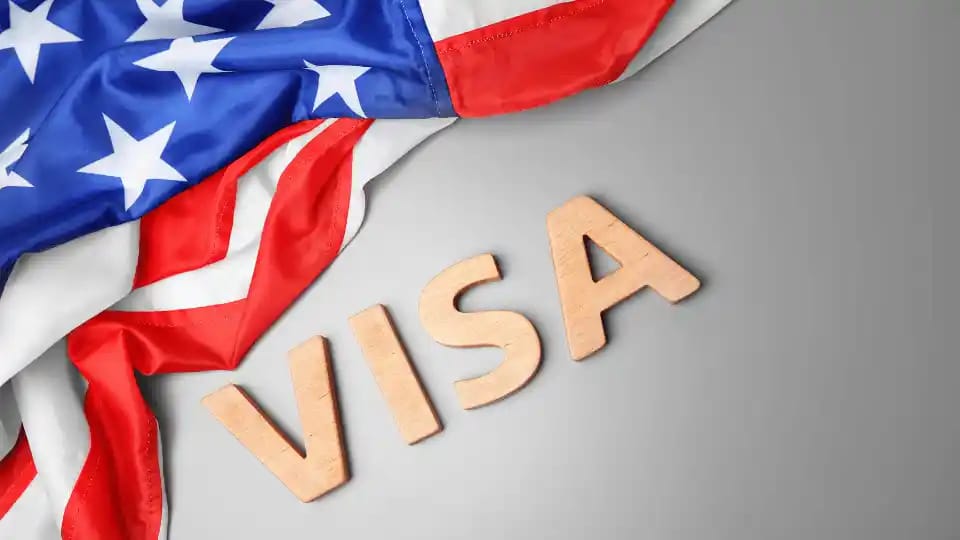Trump’s $100,000 H-1B visa fee jolts Indian IT, students
Companies to explore alternatives such as L-1 visas for intra-company transfers, nearshoring to hubs in Latin America and fully remote teams in India and Eastern Europe
By Jyoti Banthia and Sanjana B
Updated - September 20, 2025 at 08:44 PM
India’s IT industry faces a major shock
India’s IT industry is set to be significantly impacted by President Donald Trump’s decision to implement an annual fee of $100,000 on H-1B visas.
This announcement exacerbates an already volatile macroeconomic environment, further complicated by recent tariff increases.
Data from the United States Citizenship and Immigration Services (USCIS) indicates that Indian companies are primary users of H-1B visas. For instance, between Fiscal Year 2009 and Fiscal Year 2025, TCS alone secured 98,259 such visas.
The imposition of this fee introduces substantial financial pressure on these firms, potentially altering their operational strategies and recruitment practices within the US market, as per industry experts.
Industry reaction
Nasscom’s warning
Industry body Nasscom said the abrupt rollout — applicable to anyone entering the US after 12:01 a.m. on September 21 — creates “considerable uncertainty for businesses, professionals and students across the world.”
It warned that “adjustments of this nature can potentially have ripple effects on America’s innovation ecosystem and the wider job economy,” even as it acknowledged that Indian IT firms have been reducing their dependence on H-1Bs through local hiring.
“High-skill talent remains vital to sustaining America’s innovation leadership and long-term economic strength.” — Nasscom
Impact on international students
Mamta Shekhawat, Founder of study abroad platform Gradding.com, said the new policy will sharply reduce opportunities for international graduates.
“A fee as high as $100,000 would undoubtedly make US companies think twice before sponsoring H-1B candidates. For many mid-sized firms and start-ups, the cost will outweigh the potential gains. Even larger corporations will be toying with the ROI figures.”
Shekhawat added that Indian IT service companies face the sharpest blow:
- Increased operational costs
- Lower profit margins
- Decrease in onsite workers
This will push firms toward automation and accelerate offshore delivery to India.
XIPHIAS Immigration view
Varun Singh, MD of XIPHIAS Immigration, echoed that sentiment:
“A $100,000 H-1B fee doesn’t just raise costs—it turns hiring into a financial gamble rather than a talent opportunity. For Indian IT giants, the cost doesn’t just squeeze margins—it reshapes the on-site model itself.”
Companies explore alternatives
Analysts say companies are already preparing new strategies:
- L-1 visas for intra-company transfers
- Nearshoring to hubs in Latin America
- Remote-first teams in India and Eastern Europe
“High fees won’t stop companies from using global talent — they’ll just use it outside America,” Singh said.
Shekhawat noted this could accelerate the rise of globally distributed teams.
“In the long horizon, firms will continue to work with foreign experts—just without heavy dependence on US work visas.”
Big tech impact vs mid-tier IT
American big tech majors — major users of H-1Bs today — hire high-skilled foreign workers in larger salary brackets. For them, the fee is less damaging.
However, experts note that the biggest hit will be on:
- Mid to smaller Indian IT services
- Mid-size GCCs (Global Capability Centers)
- US startups trying to hire foreign talent
Gaurav Vasu, Founder and CEO of UnearthInsight, explained:
“On the basis of margin impact, $100,000 fee will impact Indian companies more. But their dependence on H-1Bs has been coming down over the years. Large Indian IT services players have reduced their dependence on H-1Bs over the last 5–7 years. However, small and mid-size Indian IT still depend largely on either H-1Bs or subcontractors in US.”



